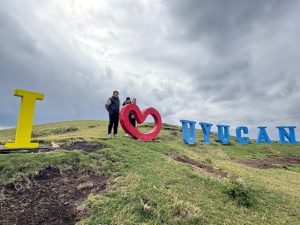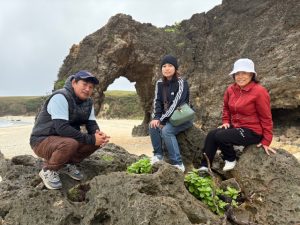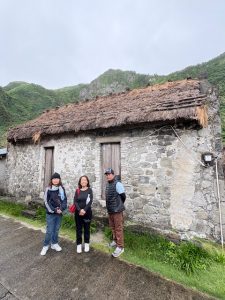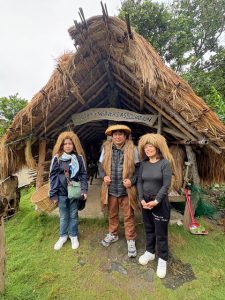Trade and Industry (DTI) Undersecretary Mary Jean Pacheco has advocated for the establishment of a cold chain facility in Batanes, the country’s northernmost province, to ensure a stable supply and pricing of basic goods on the picturesque but isolated island.
Pacheco, who recently visited the remote island province, noted that supply is the most common issue in Batanes, which is frequently affected by typhoons.
Philippine Airlines (PAL) flies daily from Manila to Basco, the provincial capital, and four times a week from Clark, depending on prevailing weather conditions.
Also, no passenger boats have dared the rough seas around Batanes, except for a few cargo vessels that transport supplies to the island from the mainland. This situation has made accessibility to Batanes challenging.
Thus, Pacheco has called for improvements in logistics infrastructure to address logistics and transport costs connecting the island to Luzon.
Pacheco believes that a cold chain facility in Batanes will optimize food inventory, ensuring an adequate supply at lower costs.
She also cited the need for support for local farmers and fishers with technology and resources.
The development of new products to maximize local resources, particularly root crops, should also be pursued for additional income for local residents.
One major government intervention is providing access to credit for local businesses. By facilitating supply chain financing for small and medium local distributors, wholesalers, and retailers in remote islands, local entrepreneurs can better manage their cash flow, maintain inventory, and sustain operations.
“As DTI, we are committed to ensuring efficient supply chains for stable supply, fair prices, and competitive Philippine products,” said Pacheco.
EXPENSIVE
Just like most of us, visiting Batanes has always been on my bucket list. So, when I received my Pag-IBIG savings after retirement, I decided to use it for an air ticket to spend New Year 2025 on the picturesque island.

The return airfare was P20,000 per person for the less than 2-hour flight from Manila. The required tour package, which involves registering with a local tour guide, was more than P8,000 per person for three days, including transportation, lunch, and a boat ride to the neighboring island of Sabtang. It seems everything skyrocketed in price, including simple souvenir items.
Fortunately, our accommodation at the cozy Florabells Iraya Guest House, which features a shared kitchen, was inexpensive.
RESOURCES
Being remote and inaccessible has made the prices of commodities and services in Batanes quite high. Except for vegetables, root crops, and fish, other food items and basic necessities come from the mainland. Their LPG and even bottled water are ferried from Manila, though I am unsure what the vessels bring back. I assume they are relatively light.
Their power supply is also costly, and with frequent typhoons, brownouts are common occurrences on the island. Known as the “most typhoon-prone” place in the Philippines, residents of Batanes often bear the brunt of devastating storms.
Our tour guide, Ron, explained that even fishing in the islands is challenging due to wild currents and various typhoons.

Given the challenging weather conditions in Batanes, the Ivatans primarily rely on subsistence agriculture and fishing. However, there is one industry in which they excel: cattle raising.
They could enhance cattle and goat production on a commercial scale and process the meat for shipping to the mainland. Cattle grazing on the hills and cliffs are also a great tourist attraction, but expanding this industry could bring in better revenues.
Root crops present another potential opportunity, although current production is low. With the right technology, the Ivatans can improve farm yields for garlic and sweet potatoes.
This is where the government should intervene. They need a cold chain facility, a reliable power supply, and technological support.
TOURISM
So, what makes Batanes so desirable?
Firstly, it is beautiful, pristine, rich in cultural heritage, and the challenges posed by its remote location make Batanes very attractive to tourists. There were more than 13,000 visitors to the island in 2024, an increase from over 10,000 in 2023.
Known for its unique rock formations, rolling hills, lighthouses, free-roaming horses and cattle, scenic coastlines, and peaceful inhabitants, Batanes offers a genuinely calming escape from the city. The unique culture of the islands’ first settlers, the Ivatans, certainly makes it more compelling to visit and explore.
Home to approximately 18,000 residents across the 230-square-kilometer island, Batanes is the smallest province in the Philippines. It consists of ten islands, but only three are inhabited: Basco (the provincial capital), Sabtang, and Itbayat (the largest). The other uninhabited islands are Yami, North, Mavudis, Siayan, Di-nem, and Dequey.

Batanes is situated between the vast expanses of the Bashi Channel and the Balintang Channel, where the Pacific Ocean merges with the China Sea. It is closer to Taiwan than to Tuguegarao, as it belongs to the Cagayan Valley region.
The island’s location and geography make it prone to strong winds, even when there are no weather disturbances. Thus, a specialized boat called Falluwah is needed to reach Sabtang and Itbayat islands.
Basco alone boasts of breathtaking rolling hills and valleys, comparable to Iceland, albeit with trees. You can linger in these areas just to admire the stunning landscape.
As a historical note, the Japanese also occupied Batanes. Japanese soldiers built the Dipnaysupuan Japanese Tunnel, made of volcanic rocks and cement, which served as a shelter when they arrived on the island in 1941.
From 1941 to 1945, the soldiers commanded the Ivatans to dig the tunnel, creating five exit points, chambers, bunkers, and a water reservoir. The bunker served as a lookout point during their battles with the Americans. The tunnel, which is 250 meters long, also features a lower deck chamber. Today, the tunnel is another tourist attraction in Basco.

The churches in the predominantly Catholic Batanes are also worth visiting. One interesting site is the Blank Book Library in Mahatao-Batanes, or The Maywang A Libro Du Vatan, established through a grant from the Asian Public Intellectuals Fellowship – the Nippon Foundation. Be sure to stop by the coffee shops, especially Honesty.
Visit the House of Dakay and listen to the stories of Lolo Francisco, a descendant of the owner, Lola Florestida Estrella. The House of Dakay is the oldest stone house in Ivana, Batanes. Built with lime and coral stone in 1887, this small structure survived one of the strongest earthquakes in Batanes on September 13, 1918. It has been designated a UNESCO heritage building.
Interestingly, when you shop in Basco, you buy from stores located beneath residential houses, as there is no public market to visit.
To gain a deeper understanding of Ivatan culture, one should visit Sabtang and Itbayat islands via the Faluwa, a boat specifically designed for navigating these waters.
The journey to Sabtang takes just 30 to 40 minutes, but could be shorter if not for the wild waves. Tourists welcome the rough boat ride, viewing it as part of the Batanes experience, while residents often find calm seas somewhat boring.
Despite the encroachment of technology, Sabtang Island maintains the charm of a quaint town where residents protect their cultural heritage. They still live in traditional Ivatan stone houses with thatched roofs made of thick cogon grass that can withstand even the strongest typhoons.

Ron mentioned that the spirit of Bayanihan is still very much alive in Sabtang, where neighbors contribute bundles of cogon grass when someone, especially newlyweds, constructs a new house.
Ivatan women in Sabtang still wear the vakul, crafted from the fibers of the vuyavuy palm, a local plant that showcases the ingenuity and adaptability of the people to their harsh environment. It takes approximately six to seven days to finish one vakul.
Another iconic piece of Ivatan farming attire is the kanayi (a vest) for men, also made from vuyavuy.

The drive along the coast in Basco and Sabtang is very scenic, offering landscapes reminiscent of those in foreign films. The beaches and rock formations are among the best.
Ivatans also have distinct physical features; they are generally slimmer and taller than the average Filipino, with nice nose shapes and fairer complexions.
One way to preserve Batanes without sacrificing modernity is to adopt electric trikes instead of traditional motor vehicles.
Visit this windy island during the months of November to February to experience their unique version of winter.




